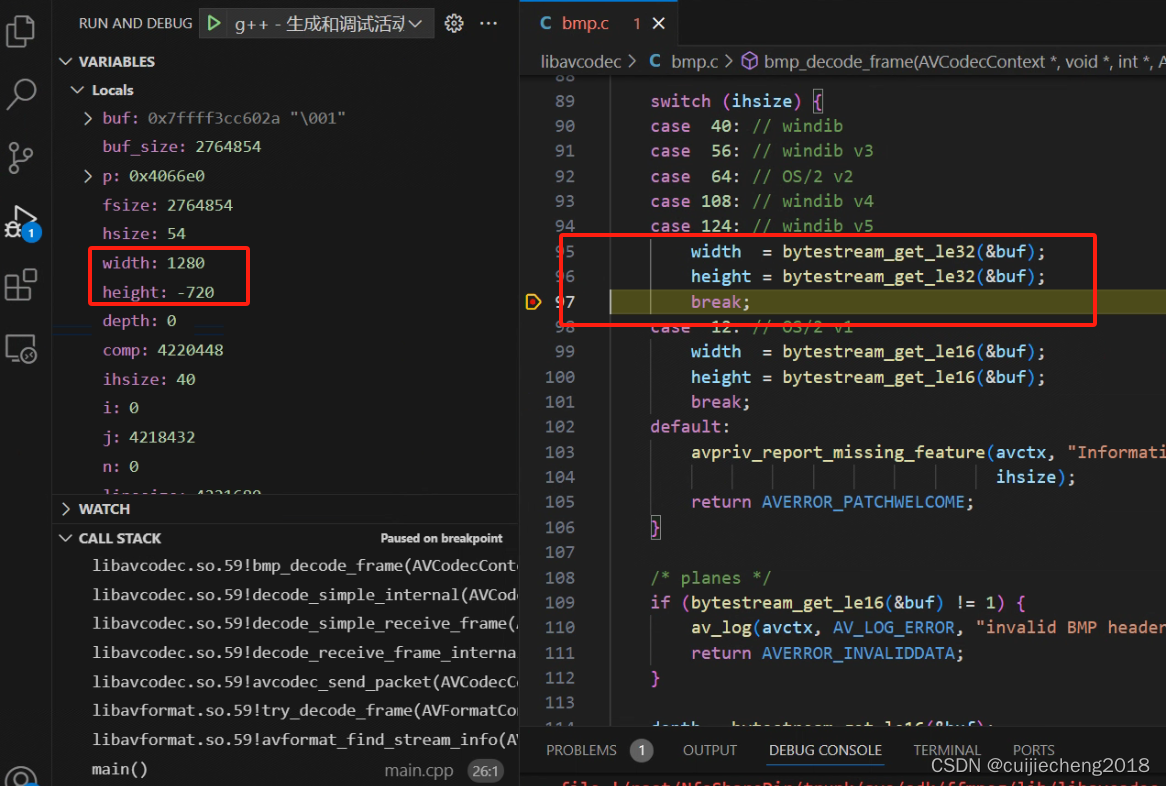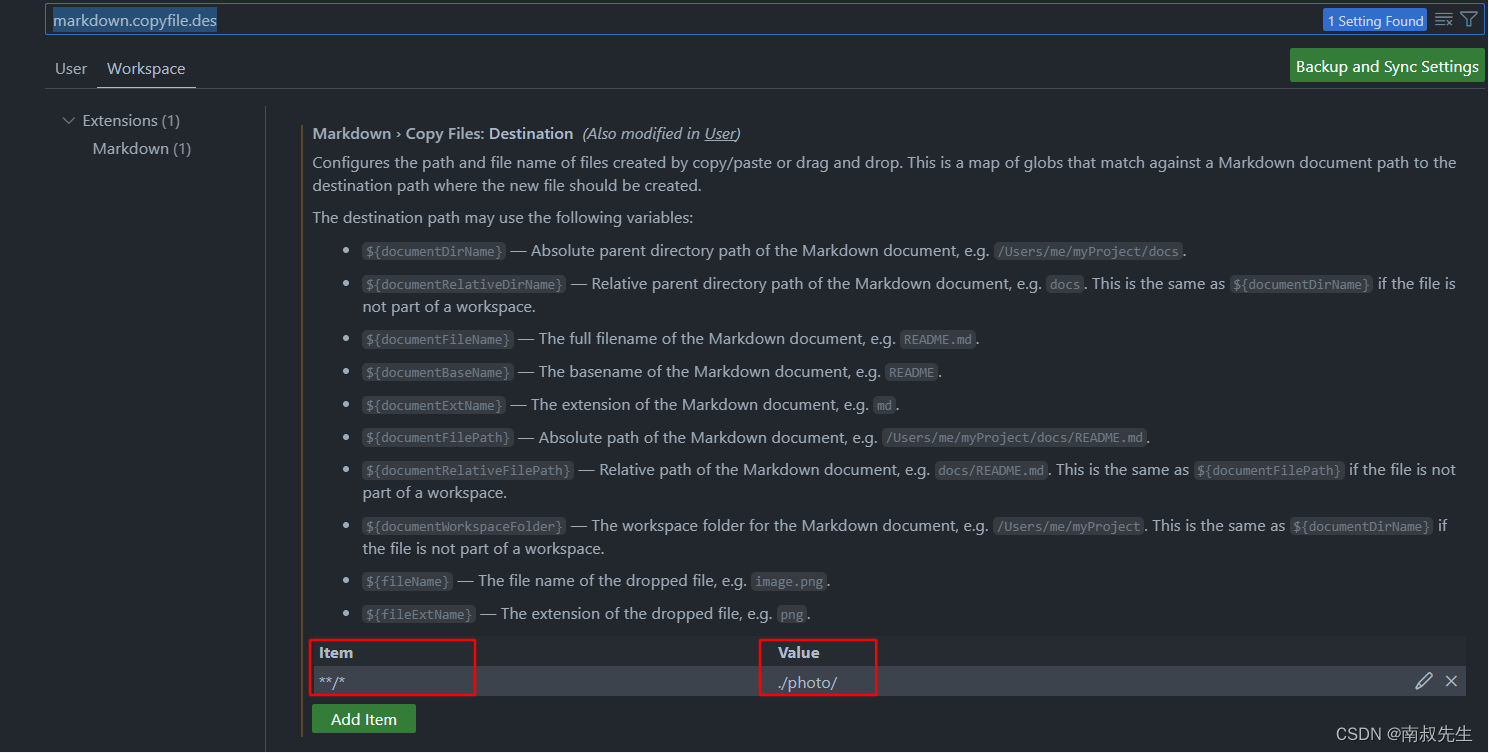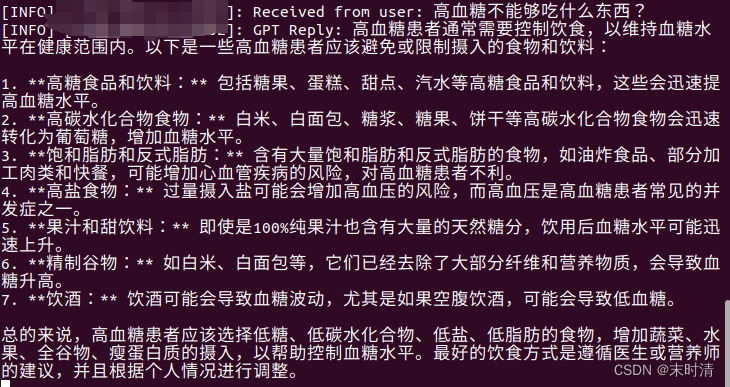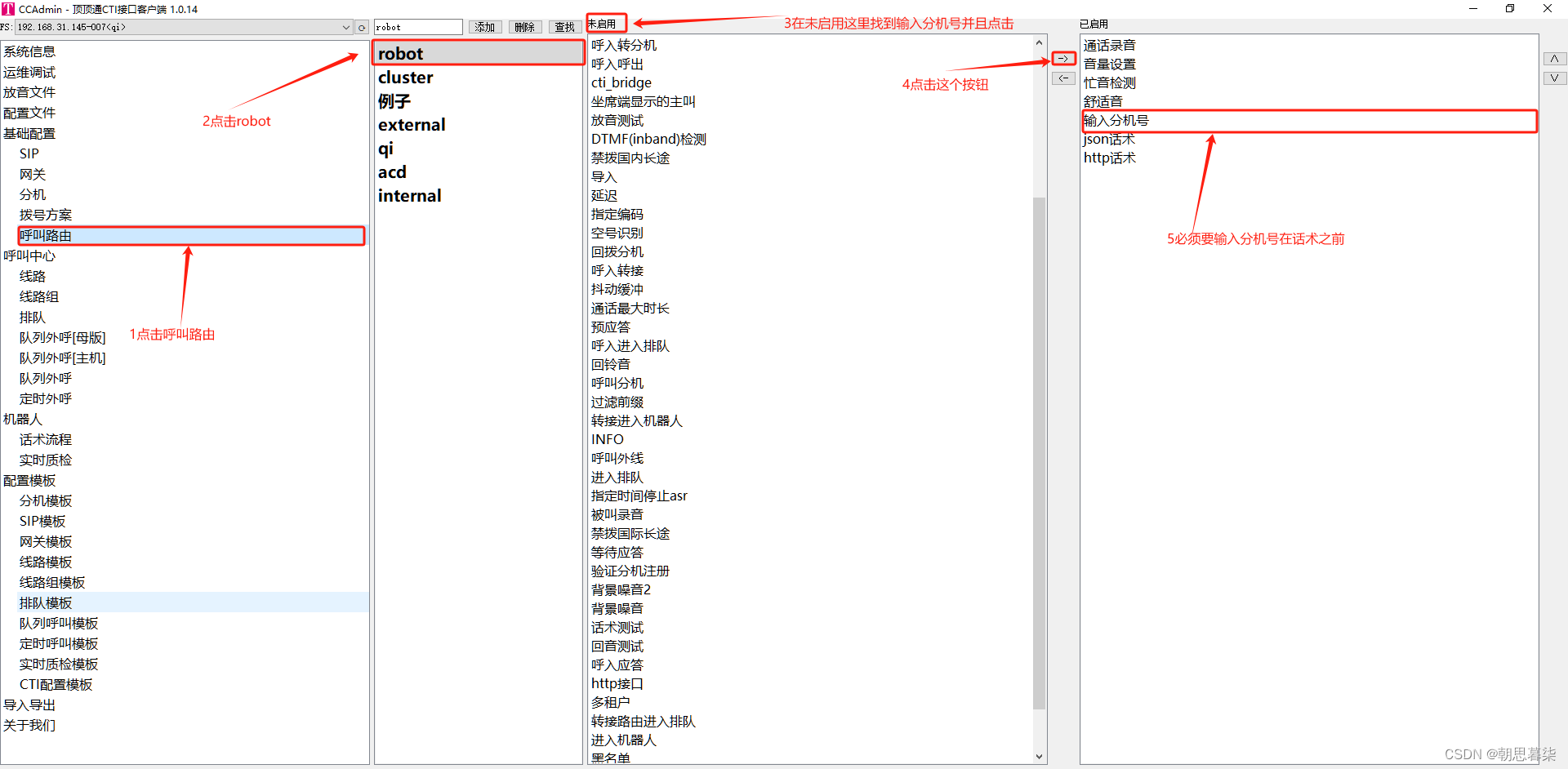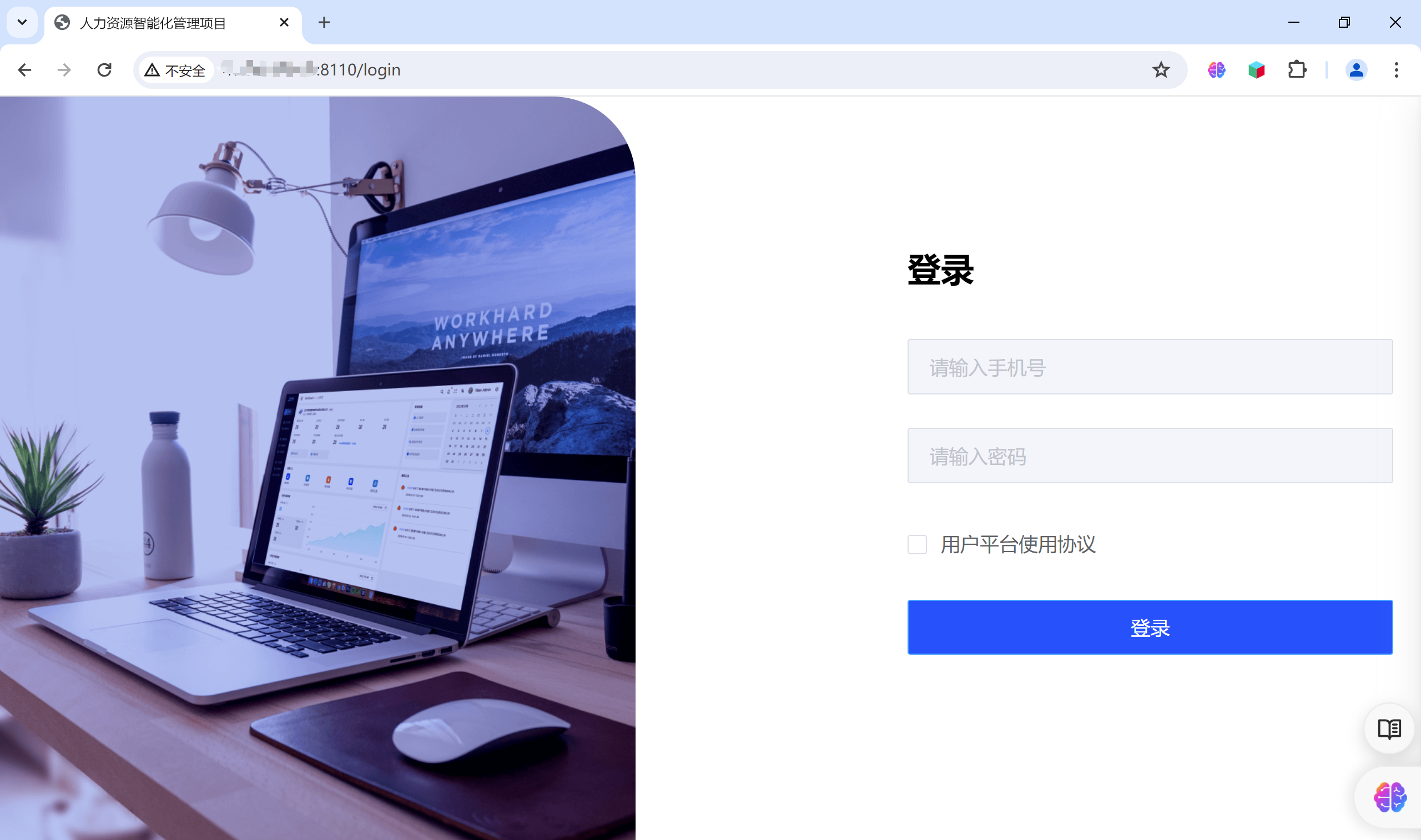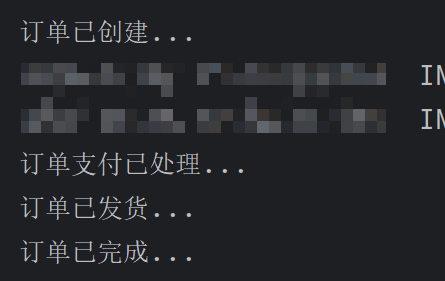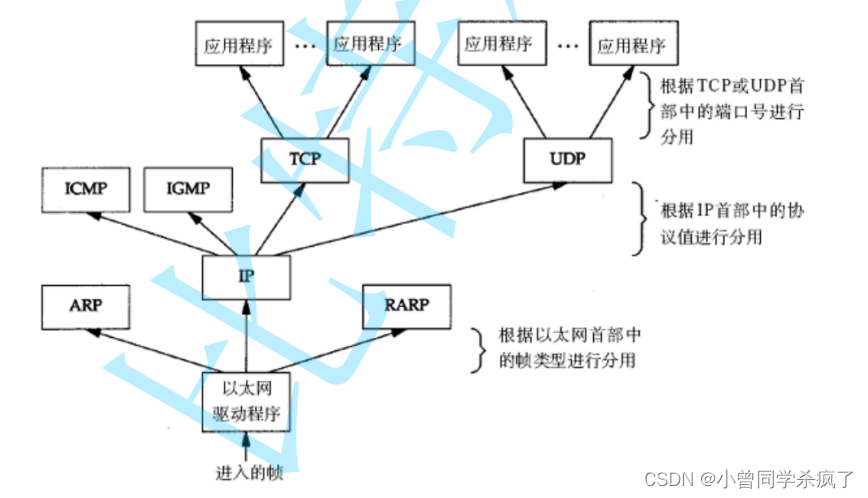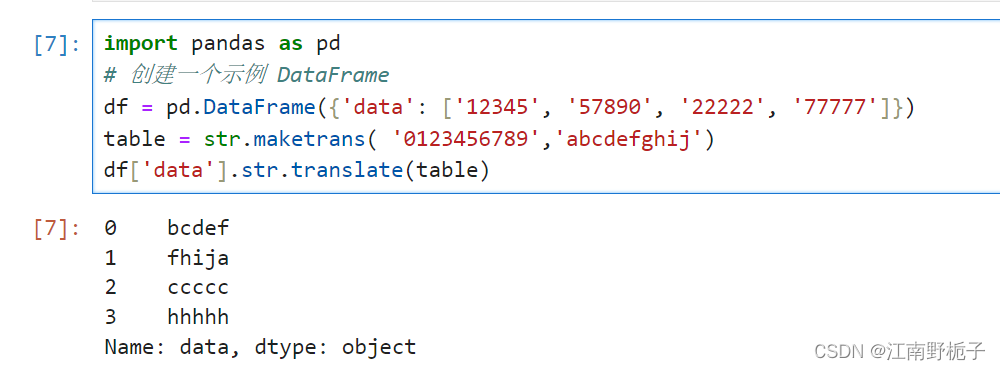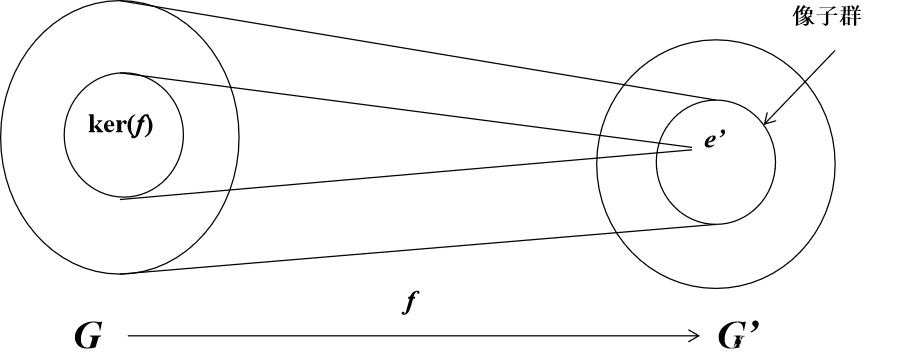观察者模式
在介绍Spring的事件驱动之前,先简单的介绍一下设计模式中的观察者模式。
在一个简单的观察者模式只需要观察者和被观察者两个元素。简单举个栗子:
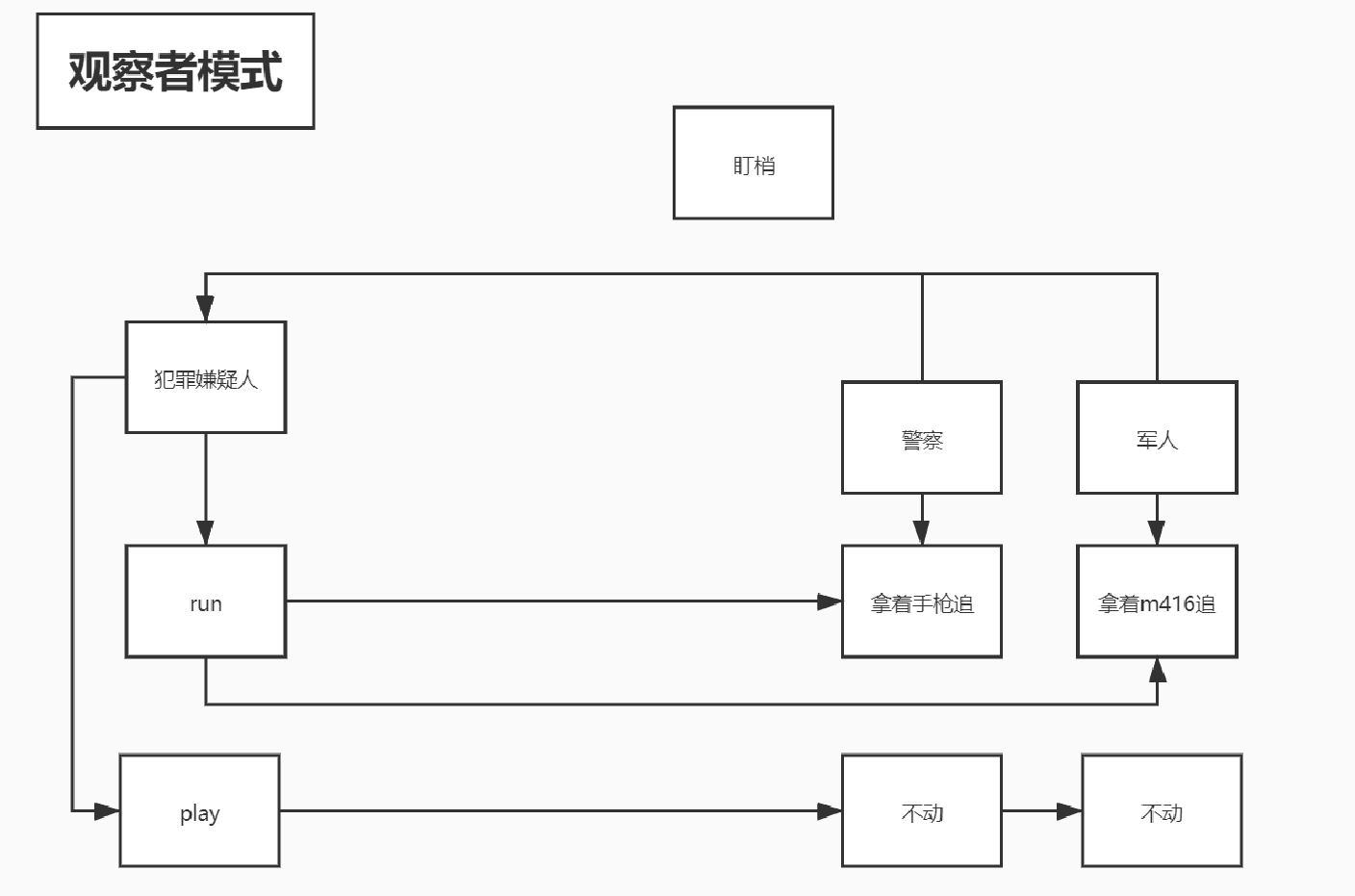
以警察盯梢犯罪嫌疑人的栗子来说:
其中犯罪嫌疑人为被观察者元素而 警察和军人为观察者元素,被观察者的状态发生了改变(run),观察者收到通知并进行相应改变(追捕)。
代码
被观察者
图示中标记可以看出,可能会有多个观察者进行观察,所以会有add、remove方法,如果被观察者状态进行改变,则调用notifyObservers()方法通知所有的观察者。
public interface Observable {
//收集对应的观察者到集合中
void addObserver(Observer observer);
//从集合中移除对应的观察者
void removeObserver(Observer observer);
//通知所有观察者
void notifyObservers(String str);
}
被观察者实现类
public class BadMan implements Observable {
List<Observer> observerList = new ArrayList<>();
@Override
public void addObserver(Observer observer) {
this.observerList.add(observer);
}
@Override
public void removeObserver(Observer observer) {
this.observerList.remove(observer);
}
@Override
public void notifyObservers(String str) {
System.out.println(str);
for (Observer observer : observerList) {
observer.apprehend();
}
}
public void run(String str) {
notifyObservers(str);
}
public void play(String str){
System.out.println(str);
}
}
观察者
public interface Observer {
//抓捕方法
void apprehend();
}
观察者实现类
当接到被观察者通知,做出相应的逻辑。
public class GoodMan1 implements Observer{
@Override
public void apprehend() {
System.out.println("goodman1 ---------抓捕小偷");
}
}
public class GoodMan2 implements Observer{
@Override
public void apprehend() {
System.out.println("goodman2------------逮捕小偷");
}
}
测试
public static void main(String[] args) {
GoodMan1 gm1 = new GoodMan1();
GoodMan2 gm2 = new GoodMan2();
BadMan bm = new BadMan();
bm.addObserver(gm1);
bm.addObserver(gm2);
bm.run("小偷逃跑,开始追踪");
bm.play("小偷在玩----不用理会");
}
Spring事件驱动
Spring的事件驱动其实和上面介绍的观察者模式差不多,不过进行了更细致的划分,也更加的解耦,我们来看看Spring的事件驱动。
图解
看源码之前先来看看Spring事件驱动和传统观察者模式的区别。

逻辑顺序
将Spring事件驱动的每个组件串联起来执行的顺序就是。

源码
依然是refresh()源码主流程,此时来到了initApplicationEventMulticaster()方法。
public void refresh() throws BeansException, IllegalStateException {
synchronized (this.startupShutdownMonitor) {
// Prepare this context for refreshing.
prepareRefresh();
// Tell the subclass to refresh the internal bean factory.
ConfigurableListableBeanFactory beanFactory = obtainFreshBeanFactory();
// Prepare the bean factory for use in this context.
prepareBeanFactory(beanFactory);
try {
// Allows post-processing of the bean factory in context subclasses.
postProcessBeanFactory(beanFactory);
// Invoke factory processors registered as beans in the context.
invokeBeanFactoryPostProcessors(beanFactory);
// Register bean processors that intercept bean creation.
registerBeanPostProcessors(beanFactory);
// Initialize message source for this context.
// 为上下文初始化message源,即不同语言的消息体,国际化处理,在springmvc的时候通过国际化的代码重点讲
initMessageSource();
// Initialize event multicaster for this context.
// 初始化事件监听多路广播器
initApplicationEventMulticaster();
// Initialize other special beans in specific context subclasses.
onRefresh();
// Check for listener beans and register them.
//向广播器中注册listener
registerListeners();
// Instantiate all remaining (non-lazy-init) singletons.
finishBeanFactoryInitialization(beanFactory);
// Last step: publish corresponding event.
finishRefresh();
}
}
}
initApplicationEventMulticaster
初始化多播器,如果BeanFactory不包含,则创建一个SimpleApplicationEventMulticaster多播器。
protected void initApplicationEventMulticaster() {
//获取beanFactory对象
ConfigurableListableBeanFactory beanFactory = getBeanFactory();
// 如果包含applicationEventMulticaster,则赋值给applicationEventMulticaster变量
if (beanFactory.containsLocalBean(APPLICATION_EVENT_MULTICASTER_BEAN_NAME)) {
this.applicationEventMulticaster =
beanFactory.getBean(APPLICATION_EVENT_MULTICASTER_BEAN_NAME, ApplicationEventMulticaster.class);
}
else {
//创建默认的SimpleApplicationEventMulticaster
this.applicationEventMulticaster = new SimpleApplicationEventMulticaster(beanFactory);
//注册到beanFactory中
beanFactory.registerSingleton(APPLICATION_EVENT_MULTICASTER_BEAN_NAME, this.applicationEventMulticaster);
}
}
registerListeners
向多播器中注册Listener。应用程序中自带的Lintener -> 实现了ApplicationListener的Listener -> 发布earlyApplicationEvents 事件。
此时的earlyApplicationEvents = null,所以不会进行事件处理。
protected void registerListeners() {
// Register statically specified listeners first.
//获取应用程序中存在的监听器集合,并添加到多播器中
for (ApplicationListener<?> listener : getApplicationListeners()) {
getApplicationEventMulticaster().addApplicationListener(listener);
}
// Do not initialize FactoryBeans here: We need to leave all regular beans
// uninitialized to let post-processors apply to them!
//获取实现了ApplicationListener类型的监听器,并注册到多播器中
String[] listenerBeanNames = getBeanNamesForType(ApplicationListener.class, true, false);
for (String listenerBeanName : listenerBeanNames) {
getApplicationEventMulticaster().addApplicationListenerBean(listenerBeanName);
}
// Publish early application events now that we finally have a multicaster...
// 此处先发布早期的监听器集合
Set<ApplicationEvent> earlyEventsToProcess = this.earlyApplicationEvents;
this.earlyApplicationEvents = null;
if (!CollectionUtils.isEmpty(earlyEventsToProcess)) {
for (ApplicationEvent earlyEvent : earlyEventsToProcess) {
getApplicationEventMulticaster().multicastEvent(earlyEvent);
}
}
}
finishRefresh
将监听器添加到多播器后,跳过中间方法,我们直接来看事件的发布publishEvent()。
protected void finishRefresh() {
// Clear context-level resource caches (such as ASM metadata from scanning).
clearResourceCaches();
// Initialize lifecycle processor for this context.
initLifecycleProcessor();
// Propagate refresh to lifecycle processor first.
getLifecycleProcessor().onRefresh();
// Publish the final event.
publishEvent(new ContextRefreshedEvent(this));
// Participate in LiveBeansView MBean, if active.
LiveBeansView.registerApplicationContext(this);
}
事件发布
根据publishEvent方法的调用,event参数为 new ContextRefreshedEvent(),根据上面图示,此时事件源为我当前AbstractApplicationContext类进行的事件发布
protected void publishEvent(Object event, @Nullable ResolvableType eventType) {
Assert.notNull(event, "Event must not be null");
// Decorate event as an ApplicationEvent if necessary
// 如果事件不是ApplicationEvent,则创建一个PayloadApplicationEvent
ApplicationEvent applicationEvent;
if (event instanceof ApplicationEvent) {
applicationEvent = (ApplicationEvent) event;
}
else {
applicationEvent = new PayloadApplicationEvent<>(this, event);
//如果event = null
if (eventType == null) {
// 将applicationEvent转换为PayloadApplicationEvent对象象,引用其ResolvableType对象
eventType = ((PayloadApplicationEvent<?>) applicationEvent).getResolvableType();
}
}
// Multicast right now if possible - or lazily once the multicaster is initialized
// 如果可能的话,现在就进行组播——或者在组播初始化后延迟
// earlyApplicationEvents:在多播程序设置之前发布的ApplicationEvent
// 如果earlyApplicationEvents不为 null,这种情况只在上下文的多播器还没有初始化的情况下才会成立,会将applicationEvent
// 添加到earlyApplicationEvents保存起来,待多博器初始化后才继续进行多播到适当的监听器
if (this.earlyApplicationEvents != null) {
this.earlyApplicationEvents.add(applicationEvent);
}
else {
getApplicationEventMulticaster().multicastEvent(applicationEvent, eventType);
}
// Publish event via parent context as well...
// 如果父上下文不为空,则通过父上下文发布事件
if (this.parent != null) {
if (this.parent instanceof AbstractApplicationContext) {
((AbstractApplicationContext) this.parent).publishEvent(event, eventType);
}
else {
this.parent.publishEvent(event);
}
}
}
public void multicastEvent(final ApplicationEvent event, @Nullable ResolvableType eventType) {
// 如果eventType不为null就引用eventType;否则将event转换为ResolvableType对象再引用
ResolvableType type = (eventType != null ? eventType : resolveDefaultEventType(event));
//获取当前多播器的任务线程池
Executor executor = getTaskExecutor();
//根据给定事件和类型匹配的应用监听器集合
// 遍历所有监听器
for (ApplicationListener<?> listener : getApplicationListeners(event, type)) {
if (executor != null) {
//使用executor回调listener的onApplicationEvent方法,传入event
executor.execute(() -> invokeListener(listener, event));
}
else {
//回调listener的onApplicationEvent方法,传入event
invokeListener(listener, event);
}
}
}
流程图
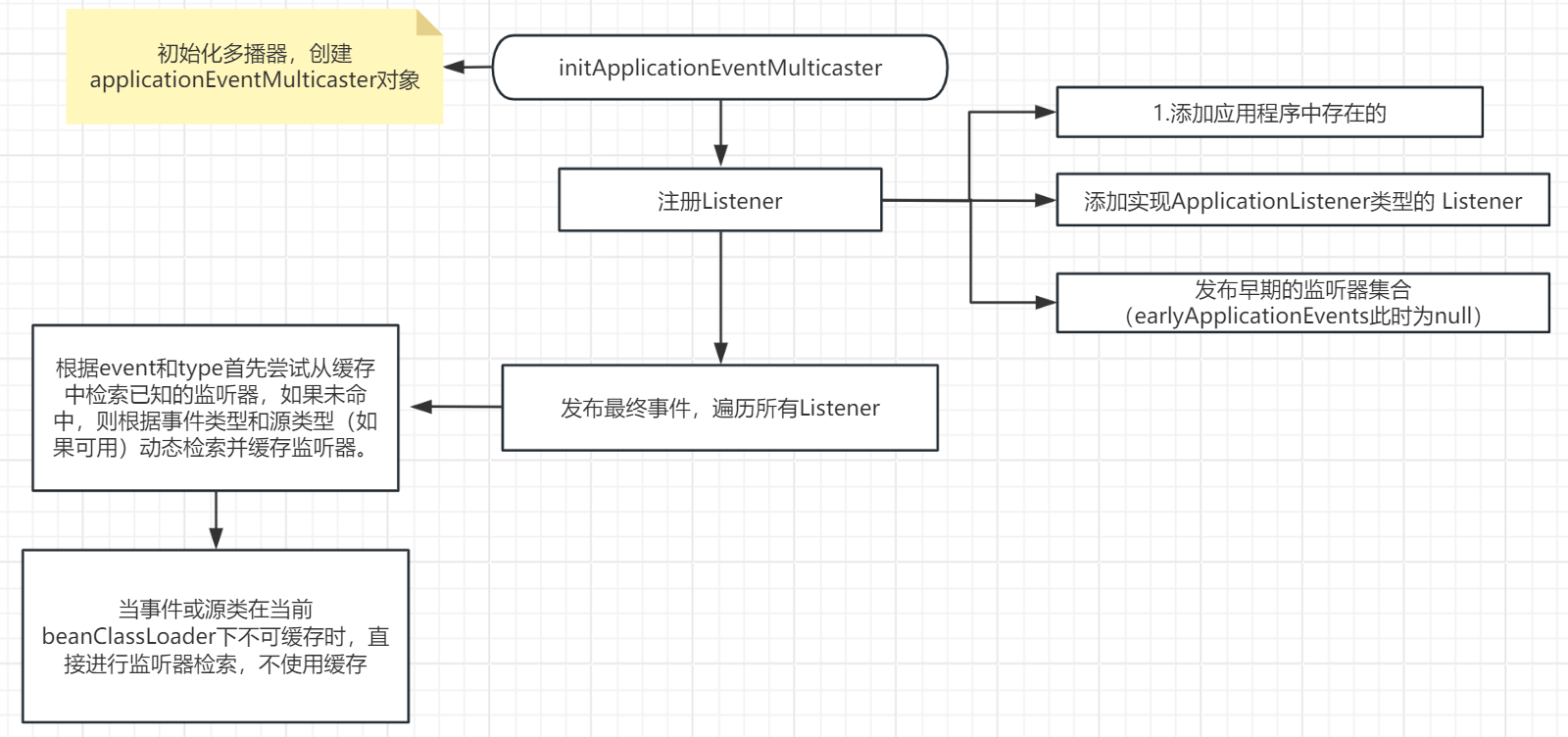
SpringBoot
事件驱动在Spring中没有明显的处理过程,我们结合SpringBoot来一起验证一下。从SpringBoot的启动run()方法开始。
spring.factories
首先我们可以看到配置文件中准备的一些Listener

run
我们的run()方法中,首先通过SpringApplicationRunListeners对Spring自带的Listener进行事件的发布处理。
public ConfigurableApplicationContext run(String... args) {
StopWatch stopWatch = new StopWatch();
stopWatch.start();
ConfigurableApplicationContext context = null;
configureHeadlessProperty();
SpringApplicationRunListeners listeners = getRunListeners(args);
listeners.starting();
try {
// 省略部分代码....
refreshContext(context);
// 省略部分代码....
}
return context;
}
创建SpringApplicationRunListener对象并获取自带Listener集合。
//获取SpringApplicationRunListeners对象
private SpringApplicationRunListeners getRunListeners(String[] args) {
Class<?>[] types = new Class<?>[] { SpringApplication.class, String[].class };
//创建SpringApplicationRunListeners对象并返回
return new SpringApplicationRunListeners(logger,
getSpringFactoriesInstances(SpringApplicationRunListener.class, types, this, args));
}
private <T> Collection<T> getSpringFactoriesInstances(Class<T> type, Class<?>[] parameterTypes, Object... args) {
ClassLoader classLoader = getClassLoader();
// Use names and ensure unique to protect against duplicates
//loadFactoryNames会加载spring.factories文件,并转换成key , value的Map放入缓存中
//如上图所示,根据key 来获取 Listener
Set<String> names = new LinkedHashSet<>(SpringFactoriesLoader.loadFactoryNames(type, classLoader));
List<T> instances = createSpringFactoriesInstances(type, parameterTypes, classLoader, args, names);
AnnotationAwareOrderComparator.sort(instances);
return instances;
}
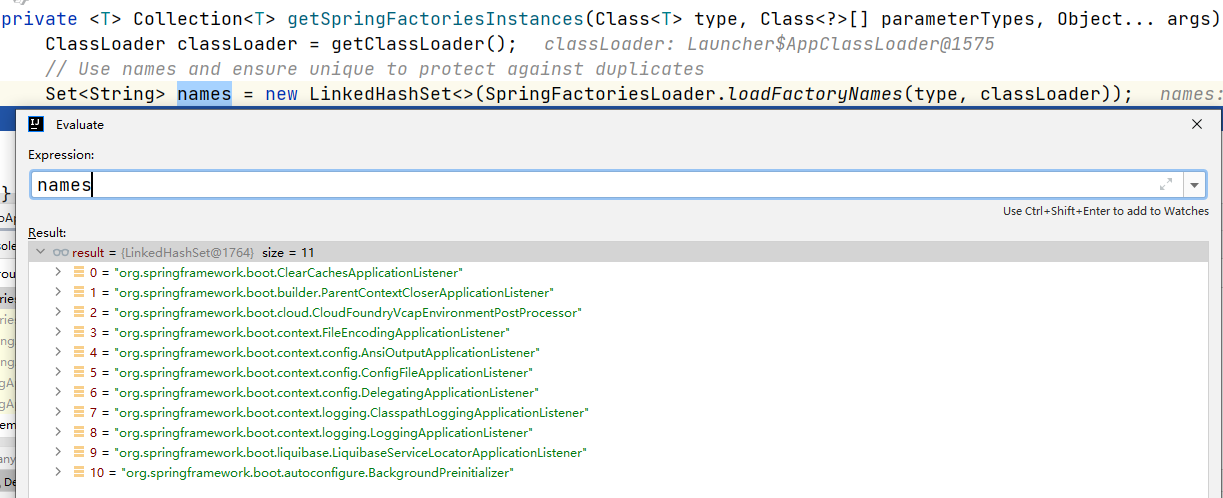
事件发布
listeners.starting() 底层会通过 initialMulticaster 循环遍历对满足条件的Listener 进行事件发布通知,底层同样执行listener.onApplicationEvent方法。
public void starting() {
this.initialMulticaster.multicastEvent(new ApplicationStartingEvent(this.application, this.args));
}
public void multicastEvent(final ApplicationEvent event, @Nullable ResolvableType eventType) {
ResolvableType type = (eventType != null ? eventType : resolveDefaultEventType(event));
Executor executor = getTaskExecutor();
for (ApplicationListener<?> listener : getApplicationListeners(event, type)) {
if (executor != null) {
executor.execute(() -> invokeListener(listener, event));
}
else {
invokeListener(listener, event);
}
}
}
initialMulticaster的加载
多播器可能有多个,其中initialMulticaster是一个有别于上文提到的applicationEventMulticaster。但作用都是相同的,遍历Listener过滤出符合条件的监听器进行事件处理。
初始化
initialMulticaster变量是随着EventPublishingRunListener类的加载而进行的初始化,而EventPublishingRunListener的创建也是根据spring.factories的加载而生成的。
public EventPublishingRunListener(SpringApplication application, String[] args) {
this.application = application;
this.args = args;
this.initialMulticaster = new SimpleApplicationEventMulticaster();
for (ApplicationListener<?> listener : application.getListeners()) {
this.initialMulticaster.addApplicationListener(listener);
}
}

private <T> List<T> createSpringFactoriesInstances(Class<T> type, Class<?>[] parameterTypes,
ClassLoader classLoader, Object[] args, Set<String> names) {
List<T> instances = new ArrayList<>(names.size());
for (String name : names) {
try {
Class<?> instanceClass = ClassUtils.forName(name, classLoader);
Assert.isAssignable(type, instanceClass);
Constructor<?> constructor = instanceClass.getDeclaredConstructor(parameterTypes);
T instance = (T) BeanUtils.instantiateClass(constructor, args);
instances.add(instance);
}
catch (Throwable ex) {
throw new IllegalArgumentException("Cannot instantiate " + type + " : " + name, ex);
}
}
return instances;
}
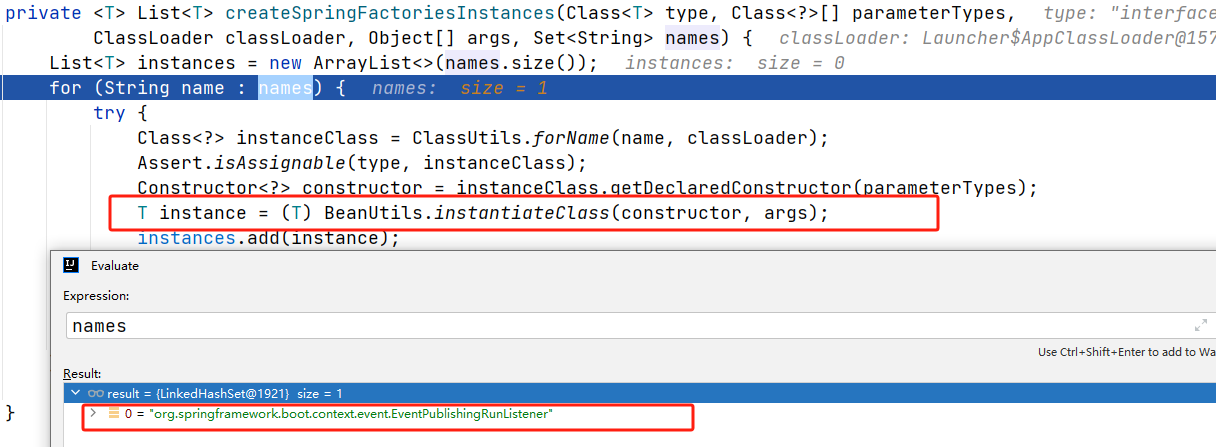
同一个监听器的不同事件处理
上面有提到监听器会根据不同的事件作出不同的处理。以ConfigFileApplicationListener 为例,onApplicationEvent方法中会根据event的类型不同,而有不同的实现逻辑。
public class ConfigFileApplicationListener implements EnvironmentPostProcessor, SmartApplicationListener, Ordered {
@Override
public void onApplicationEvent(ApplicationEvent event) {
if (event instanceof ApplicationEnvironmentPreparedEvent) {
onApplicationEnvironmentPreparedEvent((ApplicationEnvironmentPreparedEvent) event);
}
if (event instanceof ApplicationPreparedEvent) {
onApplicationPreparedEvent(event);
}
}
}

